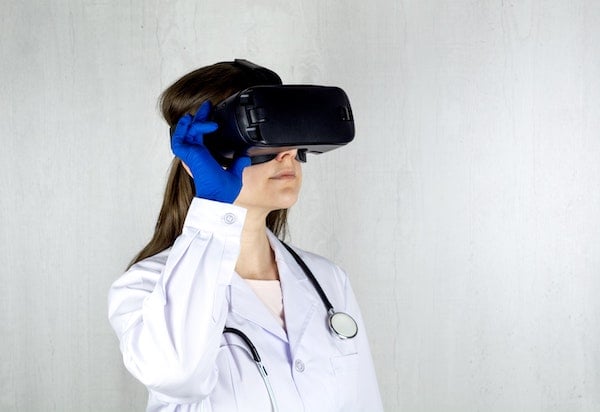Published on
Hands-On Learning During a Hands-Off Pandemic

Variously called project-based, hands-on, laboratory, experiential or tactile education there is no question that learning while doing is one of the most effective ways to learn a new concept or skill. For many students, it is the primary way through which they can successfully learn. Likewise, there are many careers for which engaging with education through practice of its required skills and competencies is essential prior to entering the field. It is impossible to learn how to weld simply by sitting in the classroom. We assume the person fixing our heating systems has seen, touched, diagnosed and fixed problems before touching our appliances. Certainly, we don’t want the sonographer to be doing their first ultrasound on us or the dental hygienist using an x-ray machine for the first time.
Employers expect their new employees to at least understand how to operate the occupation’s various tools, whether it be ensuring the cybersecurity of a computer network or operation of cameras and recording equipment in a broadcast studio. Only remembering what you have read as you respond to a fire, vehicular accident or domestic dispute can only lead to disaster unless you have practiced responding to such incidents. Providing the education and practice needed by most people making the products we buy, fixing objects that break and meeting our mental and physical health needs is what the technical colleges do. But what is a technical college to do when a pandemic forces closure of the campus and a shuttering of the essential laboratories in which most of the education occurs? That is the dilemma faced by Northeast Wisconsin Technical College upon the eruption of COVID-19.
With over a hundred associate degrees and diplomas offered, of which well over half require extensive hands-on learning in technology- and equipment-rich laboratories, the 8,500 enrolled students expect an education that allows them to learn using the technology, equipment and processes they will encounter in their careers. Employers expect no less. Finishing up the last eight weeks of a semester in a remote, primarily online learning environment is one thing; spending an entire academic year in an online environment waiting for the pandemic to run its course is, however, unacceptable. Failure by the college to create new ways of delivering hands-on education will ultimately exacerbate the skilled worker shortage, imperil the economic students’ vitality and create financial chaos for the college as it loses tuition revenue.
Fortunately, the college had the last eight weeks of the semester to try new approaches and a summer to develop and refine the selected learning delivery strategies. It is inevitable that some on-campus instruction will have to be delivered in-person. Requiring masks and physical distancing will allow for a safer environment. Reducing the size of classes will further help. But these changes will not be enough. We need to reduce the student density at any one time on the campus. This means we must maximize remote learning. The challenge to doing so is maintaining the essence of technical college – hands-on learning.
Part of the answer is to move a program’s lectures to a remote format such as synchronous delivery through web-conferencing platforms or asynchronous learning available in totally online instruction. A combination of remote synchronous and in-person deliveries has proven to be very effective. An added benefit is that many of these blended courses could easily pivot to being entirely off campus in the event the pandemic worsens.
This strategy, of course, does not work for a program’s hands-on or laboratory-based portion. Perhaps virtual and augmented reality tools may be of use. To date, however, the necessary technology and its delivery is not widely available to all demographics the college serves or for all programs it offers. With a little bit of creativity, however, NWTC’s faculty stretched and continue to stretch the boundaries of how much hands-on learning can be delivered remotely.
Quite a few simulations for use in teaching physical sciences are publicly or commercially available. Some projects to do at home were developed by our instructors. Physics instructor Shannon Brunette asked students to hold both of a family member’s hands and then rotate around their hands, as the axis, to feel the rotational forces or tangential velocity. As Shannon prepares for the fall, her students will have simulations to generate data and “try this at home” (Shannon’s words) projects for feeling. Chemistry faculty have found a mix of free YouTube videos online that students use to fill out data sheets and conduct analysis. This summer, students purchased molecular model kits with which they could do some modeling and “hands-on” activities at home. Anatomy and physiology faculty are producing videos using models to teach and assess anatomy. They are using simulations and test results to have students provide an analysis of the results.
Diagnostic medicals Sonography faculty purchased a product called SonoSim® Ultrasound Training Solutions to replace lab and practice time. Students picked up the product curbside at the college and used it at home. Nursing faculty are evaluating Swift River™ as a set of virtual simulations for first-year nursing students. Faculty in the nursing assistant program had students upload a video of themselves demonstrating themselves feeding a dependent resident. The faculty provided the supplies needed, and the student practiced on a family member.
The college has a set of six automation classes that are part of its mechanical and electrical engineering technology programs as well supporting an electro-mechanical program. Students must diagnose problems and implement solutions that require access to sophisticated equipment. NWTC’s engineering faculty, prior to the pandemic, had developed a number of mobile trainers for which the college received a patent called MobileModular™. Using VMware Horizon® they were able to allow students to access and utilize Rockwell™ Software, SOLID WORKS™, MasterCam®, and Autocad®. This access allowed students to connect remotely to on campus PLCs and mobile trainers to complete their lab work. Instructors developed a simulation routine that permitted students to fully program their advanced automation machines and virtually run them in manual mode, configure a recipe and automatically run a batch without a physical trainer. Another instructor had the creative idea of having students take apart their home vacuum cleaners and then reassemble them to learn some specific competencies.
As the COVID-19 pandemic persists, faculty at NWTC expect to continue to find new and innovative ways to provide off-campus, hands-on education, expanding upon the strategies identified above. Further, it has a committee of faculty and staff exploring how to effectively use virtual and augmented reality experiences to provide off-campus hands-on learning. Work must continue to find ways to accommodate students without reliable access to the internet either for lack of broadband or necessary finances. For those with financial limitations, the college is prepared to loan computers and hotspots as needed. For those in locations without broadband, the college is establishing access through its five remote learning centers.
Northeast Wisconsin Technical College is committed to its mission of providing hands-on, real-world experiential learning Students will thus be more successful, and employers will continue to access the highly educated, skilled workforce it needs to prosper, regardless of the pandemic.



